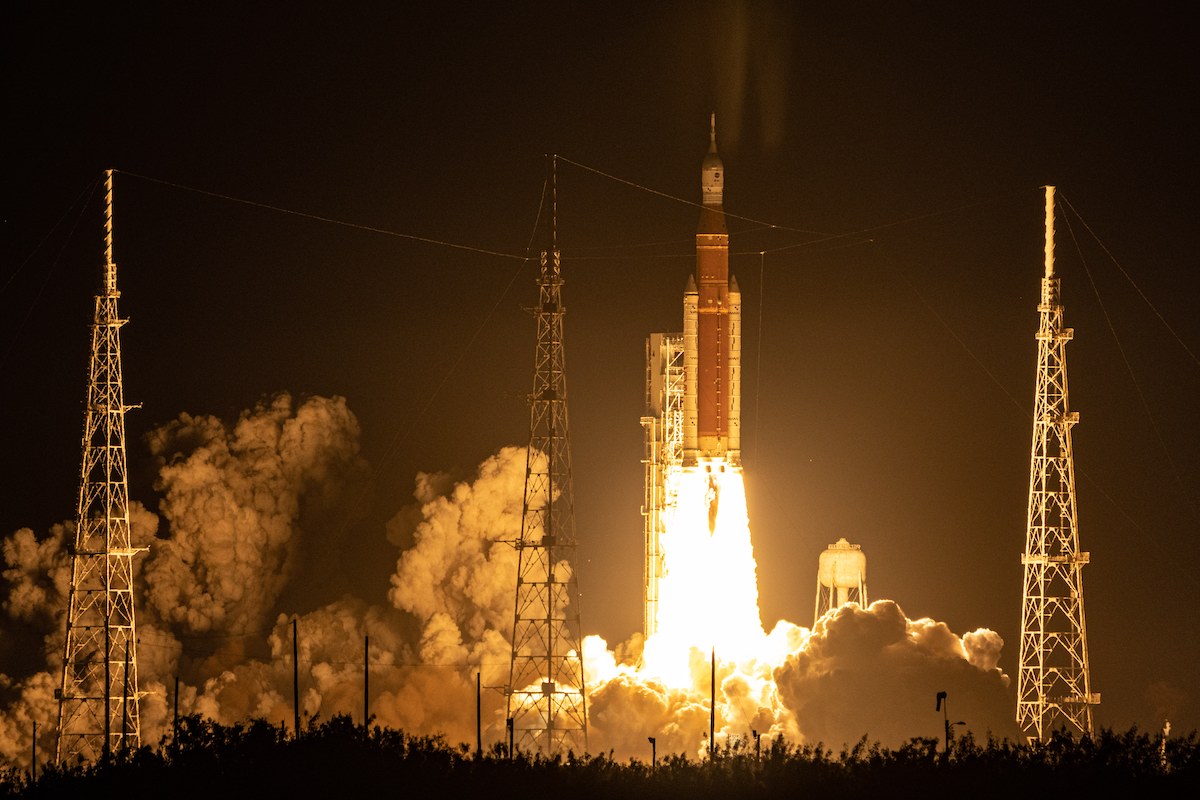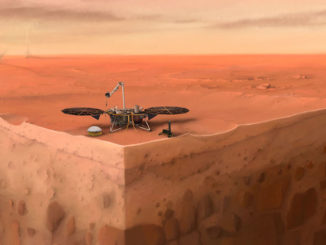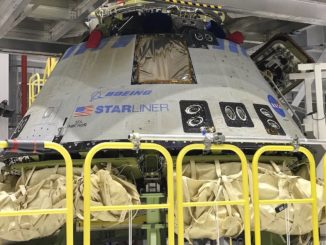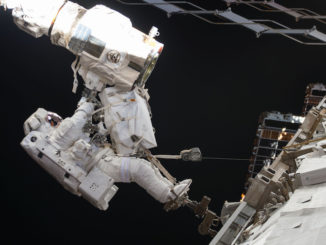
NASA will unveil the four crew members Monday who will fly around the moon on the first piloted flight of the agency’s Orion deep space capsule on the Artemis 2 mission as soon as late next year.
Three Americans and one Canadian will fly on the Artemis 2 mission, the next test flight in NASA’s Artemis moon program after the successful 25-and-a-half day unpiloted Artemis 1 demonstration mission last year.
Artemis 1 was the first flight of NASA’s huge Space Launch System moon rocket, and marked the first time an Orion spacecraft flew to the moon. Artemis 2, the second SLS/Orion moon mission set for liftoff no earlier than November 2024, will be the first time astronauts fly to the vicinity of the moon since NASA’s last Apollo mission in 1972.
NASA officials plan to announce who will fly on the Artemis 2 mission in a ceremony in Houston at 11 a.m. EDT (1500 UTC) Monday.
The Artemis program’s first attempt to land the first woman and next man on the moon is penciled in for the Artemis 3 mission with a derivative of the Starship vehicle SpaceX is developing in South Texas. That flight is scheduled for 2025, at the earliest, but NASA’s inspector general has reported the Starship lander and new moon-ready spacesuits likely won’t be ready until 2026 or later.
Under NASA’s Artemis architecture, astronauts on moon landing missions will take off from Earth atop NASA’s SLS heavy-lift rocket, fly to the moon’s vicinity in an Orion capsule, then link up with a human-rated lander for the trip to and from the lunar surface. The astronauts will then return to Earth in the Orion spacecraft.
Before attempting a lunar landing, NASA will send four astronauts on a voyage around the far side of the moon on Artemis 2. The mission will carry the crew farther from Earth than any humans in history.

NASA and the Canadian Space Agency reached an agreement in December 2020 to put a Canadian astronaut on the Artemis 2 mission, in exchange for Canada’s contribution of a robotic arm called Canadarm 3 to the Gateway space station to be assembled in orbit around the moon.
Canada also secured a spot for a Canadian astronaut on a future mission to the Gateway mini-space station, a complex about one-sixth the size of the International Space Station currently orbiting Earth. The Gateway will serve as a waypoint, spacecraft refueling station, and deep space research outpost near the moon where astronauts will conduct scientific experiments, technology demonstrations, and pass through on flights between Earth and the lunar surface.
After launching from the Kennedy Space Center in Florida to begin the Artemis 2 mission, the Space Launch System powered by four space shuttle-era main engines and two solid rocket boosters will generate 8.8 million pounds thrust to begin the astronauts’ voyage to the moon. The SLS moon rocket will fly in the same “Block 1” configuration successfully proven on the Artemis 1 launch last November.
The Space Launch System’s cryogenic upper stage will first place the Orion moon capsule into a preliminary orbit ranging 1,800 miles (2,900 kilometers) above Earth, according to NASA.
Another burn by the upper stage engine will boost the Orion spacecraft into a higher orbit stretching some 46,000 miles (74,000 kilometers) from Earth, an elliptical loop higher than geostationary communications satellites and the GPS navigation network. In that orbit, the Orion spacecraft will separate from the SLS rocket’s upper stage and will take about 23-and-a-half hours to complete one lap around the planet.

During their time in the high Earth orbit, the Artemis 2 astronauts will take off their protective pressure suits worn during launch, then complete a series of checkouts of spacecraft systems. The astronauts will test out the ship’s rendezvous and docking systems by taking manual control to re-approach and then back away from the spent cryogenic upper stage of the SLS moon rocket. The proximity operations demonstration will test the Orion spacecraft’s handling qualities during rendezvous and docking maneuvers that will be required on future Artemis moon missions.
The Orion crew capsule set to fly the Artemis 2 mission is being assembled by Lockheed Martin at NASA’s Kennedy Space Center in Florida. Unlike the Orion flown on Artemis 1, the next spacecraft in line will debut a complete environmental control and life support system, crew seats for four crew members, and cockpit controls and displays.
NASA managers want to verify the life support systems needed to generate breathable air and remote carbon dioxide and water vapor from the spacecraft’s internal atmosphere all function as designed before sending the astronauts to the moon. The day-long high Earth orbit will allow engineers to evaluate how the life support system works when the crew members exercise and sleep, assessing the system’s performance during high and low metabolic rates for the astronauts.
Ground teams will also confirm they can communicate with the Orion spacecraft and the Artemis 2 crew through the Deep Space Network, a set of antennas at sites in California, Spain, and Australia usually tasked with contacting robotic probes exploring other planets.
Human spaceflight missions in low Earth orbit, such as the International Space Station, typically communicate with ground controllers through NASA’s fleet of Tracking and Data Relay Satellites. But the Artemis 2 mission will fly well beyond the TDRS fleet in geostationary orbit.
Once mission control and the Artemis 2 crew finish their testing in Earth orbit, the Orion spacecraft’s service module engine will ignite to propel the capsule and its four-person crew toward the moon a quarter-million miles from Earth.

The Artemis 2 mission will follow a “hybrid free return trajectory” around the moon, with an outbound trip lasting about four days. The Orion crew capsule won’t enter orbit around the moon, but still instead loop around the far side of the moon and use the influence of gravity to return directly to Earth for splashdown in the Pacific Ocean, similar to the trajectory the Apollo 13 astronauts flew after an explosion on their spacecraft forced them to cancel a planned lunar landing.
The Orion spacecraft will arc out to a distance of 4,600 miles (7,400 kilometers) beyond the far side of the moon, farther than any humans have ever traveled into space.
The Artemis 2 mission will last around 10 days, paving the way for future landing expeditions and longer-duration flights to the Gateway. NASA hasn’t confirmed flight opportunities for Japan and the European Space Agency, the other major partners in the Artemis program. But astronauts from both partners are expected to fly to the moon in the Artemis program.
ESA supplies the service modules for Orion missions, and is developing a refueling and communications module for the Gateway station. Japan is helping work on an international habitation module, along with ESA, and could send resupply ships to the Gateway complex.
Email the author.
Follow Stephen Clark on Twitter: @StephenClark1.



